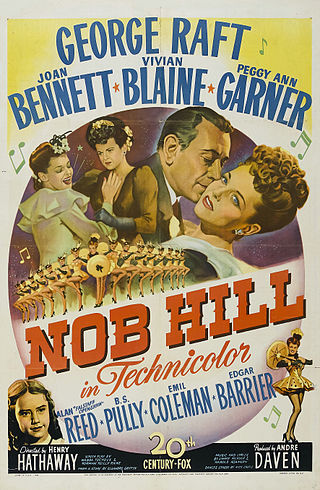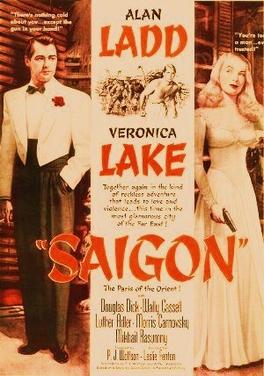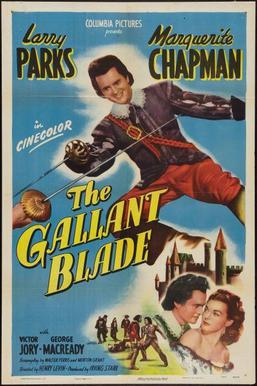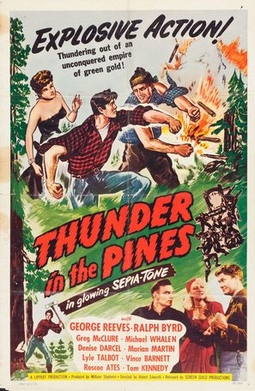Joseph M. Newman was an American film director most famous for his 1955 film This Island Earth. His credits include episodes of The Twilight Zone and The Alfred Hitchcock Hour.

John Derek was an American actor, filmmaker and photographer. He appeared in such films as Knock on Any Door, All the King's Men, Rogues of Sherwood Forest (1950), and The Ten Commandments (1956). He was also known for launching the career of his fourth wife, Bo Derek.

Jon Hall was an American film actor known for playing a variety of adventurous roles, as in 1937's The Hurricane, and later when contracted to Universal Pictures, including Invisible Agent and The Invisible Man's Revenge and six films he made with Maria Montez. He was also known to 1950s fans as the creator and star of the Ramar of the Jungle television series which ran from 1952 to 1954. Hall directed and starred in two 1960s sci-fi films in his later years, The Beach Girls and the Monster (1965) and The Navy vs. the Night Monsters (1966).

Helen of Troy is a 1956 Warner Bros. WarnerColor epic historical drama film in CinemaScope, based on Homer's Iliad and Odyssey. It was directed by Robert Wise, from a screenplay by Hugh Gray and John Twist, adapted by Hugh Gray and N. Richard Nash. The music score was by Max Steiner and the cinematography by Harry Stradling Sr.

Johnny O'Clock is a 1947 American film noir crime film directed by Robert Rossen and starring Dick Powell, Evelyn Keyes, Lee J. Cobb and Ellen Drew. It was distributed by Columbia Pictures.

Nob Hill is a 1945 Technicolor film about a Barbary Coast, San Francisco, United States saloon keeper, starring George Raft and Joan Bennett. Part musical and part drama, the movie was directed by Henry Hathaway. It remains one of Raft's lesser known movies even though it was a big success, in part because it was a musical.

Adventures of Don Juan is a 1948 American Technicolor swashbuckling adventure romance film directed by Vincent Sherman and starring Errol Flynn and Viveca Lindfors, with Robert Douglas, Alan Hale, Ann Rutherford, and Robert Warwick. Also in the cast are Barbara Bates, Raymond Burr, and Mary Stuart. The film was distributed by Warner Bros. and produced by Jerry Wald. The screenplay by George Oppenheimer and Harry Kurnitz, based on a story by Herbert Dalmas, has uncredited contributions by William Faulkner and Robert Florey.

King Solomon's Mines is a 1950 Technicolor adventure film, and the second film adaptation of the 1885 novel of the same name by Henry Rider Haggard. It stars Deborah Kerr, Stewart Granger and Richard Carlson. It was adapted by Helen Deutsch, directed by Compton Bennett and Andrew Marton and released by Metro-Goldwyn-Mayer.
Seton Ingersoll Miller was an American screenwriter and producer. During his career, he worked with film directors such as Howard Hawks and Michael Curtiz. Miller received two Oscar nominations and won once for Best Screenplay for the 1941 fantasy romantic comedy film, Here Comes Mr. Jordan, along with Sidney Buchman.

Baby Face Nelson is a 1957 American film noir crime film based on the real-life 1930s gangster, directed by Don Siegel, co-written by Daniel Mainwaring—who also wrote the screenplay for Siegel's 1956 sci-fi thriller Invasion of the Body Snatchers—and starring Mickey Rooney, Carolyn Jones, Cedric Hardwicke, Leo Gordon as Dillinger, Anthony Caruso, Jack Elam, John Hoyt and Elisha Cook Jr.

The Sign of the Ram is a 1948 American film noir directed by John Sturges and screenplay by Charles Bennett, based on a novel written by Margaret Ferguson. The drama features Susan Peters, Alexander Knox and Phyllis Thaxter. It also featured Ron Randell. The film's title alludes to people born under the astrological sign Aries, who are supposedly strong-willed and desire to be admired, as explained in the dialogue.

Cry Wolf is a 1947 American mystery film noir directed by Peter Godfrey and starring Errol Flynn, Barbara Stanwyck and Geraldine Brooks. It was produced and distributed by Warner Bros. It is based on the 1945 novel of the same name by Marjorie Carleton.

Saigon is a 1948 American crime film directed by Leslie Fenton starring Alan Ladd and Veronica Lake, in their fourth and final film together. It was distributed by Paramount Pictures and was one of the last films Veronica Lake made under her contract with the studio. Ladd and Lake made four films together; This Gun for Hire and The Glass Key, both in 1942, The Blue Dahlia in 1946 and Saigon. While the earlier films all proved to be big box office successes, Saigon did not do as well financially. Ladd continued to remain one of Paramount's top male stars, while Lake's career was in decline. By the end of 1948 her contract with Paramount had expired and the studio chose not to renew it.

Johnny Allegro is a 1949 American film noir directed by Ted Tetzlaff and starring George Raft. An ex-gangster (Raft), temporarily working as a federal agent, runs afoul of a counterfeiting crime lord (Macready) who enjoys hunting. It was one of several thrillers Raft made in the late 1940s.

The Gallant Blade is a 1948 American Cinecolor adventure film directed by Henry Levin and starring Larry Parks.

Song of India is a 1949 American adventure film directed and produced by Albert S. Rogell and starring Sabu, Gail Russell and Turhan Bey. It was produced and distributed by Columbia Pictures.

Thunder in the Pines is a 1948 American Western film directed by Robert Edwards and starring George Reeves and Ralph Byrd. The film was shot in sepia tone. It was executive produced by Robert L. Lippert.

The Burning Cross is a 1947 American drama film directed by Walter Colmes. It was written by Aubrey Wisberg and released by Screen Guild Productions.

Untamed Fury is a 1947 American adventure film directed by Ewing Scott and starring Steve Pendleton, Mikel Conrad and Leigh Whipper. It was distributed by Producers Releasing Corporation.
Ewing Scott (1897–1971) was an American writer, producer and director. He specialised in films that involved location filming.

















